| Cover 4 Techniques in the 4-3 Defense |
| By: Pat Narduzzi - Univ. of Pittsburgh
Originally Published in: Nike 2015 Coach of the Year Clinic Manual - by Earl Browning Provided by: Nike Coach of the Year Clinics I graduated from the University of Rhode Island. We moved from Youngstown State where my dad had coached. I finished at Rhode Island and then I went to Miami, Ohio to get my masters degree. I spent two years there as a graduate assistant. I did not get into coaching for the money. My father was the athletic director and head football coach at Youngstown State and made $43,000. I got into coaching because I love the game of football and I wanted to affect young men's lives. That was what I wanted to do. You can be complicated on defense and run many different fronts. In our defensive scheme we run the same scheme regardless of what the offense runs. If you start giving your players many things to do they get confused. That is particularly true when you change your fronts. We try to keep the scheme as simple as possible. That is the reason we are successful. It is not because we are a bunch of defensive geniuses. Defense is not X's and 0's. It is being fundamentally sound and getting players in position to make a plays. That is what our players did at Michigan State and wherever I have coached. One of the reasons I took the job at Pittsburgh was the location. There is great football played in the state of Pennsylvania. If you go east you have great football teams in New Jersey. If you go west you have Ohio. which has always been a good place to recruit. When I was at Michigan State, I recruited New Jersey and it was always hard to get players from New Jersey to go to Michigan State because of the distance by car. I think we can do a better job of tapping that area because we are closer now. When you coach defense you want your players to take ownership in the defense. In the first meeting you lay out what you are going to do for the year. We tell them about the philosophies of the team and discuss what we hope to accomplish. For the last several years I have asked the players to come up with those things themselves. I told them it is not what I want you to do; it is all about what you want to do. I try to get them involved with making decisions of what they want to do defensively. I put it to them as to what they want to do. Every year during spring and summer practice I have the defensive players come up with a philosophy and a nickname for the defense. I want them to develop drawings, slogans, and logos that represent our defense. At Michigan State they came up with a philosophy on their own. They called themselves - Spartan Dawgs. Their identity was "A focused group of vicious brothers forever bonded together to wreak havoc upon all opponents." The team at Michigan State did exactly what they said they were going to do. Every week before a game the last thing we looked at before we left for the stadium or left the hotel was to look at the pledge they made before the season. I told them they did these things on the sheet last week. Now what are you going to do this week? On the sheet was a group of goals they set for themselves. They wanted to create turnovers, stay hungry, and play with swag. I do not know what swag is. They wanted to create big plays, be relentless and swarm on defense. These goals and philosophical statements helped build chemistry and togetherness within the defense. They took pride and ownership in the program. The things on the sheet were things they wanted to do and they went out and accomplished them. We have a defensive philosophy. One of the points in that philosophy is defending the running game. Our philosophy is not to let teams run the ball on us. In reference to this, I remember two games in particular that illustrated that fact that if you stop the run you have a chance to win. The first game was this year's Cotton Bowl game. In that game, Baylor had minus yards average rushing the football. They scored several points but they were one-dimensional. At the end of the game when they needed to pick up a first down they tried to run for the first down and they could not do it. That is what won the game for us. The second game was in 2002, when I was at Northern Illinois. We played against Miami of Ohio when they had Ben Roethlisberger. They had the ball for 45 minutes and 15 seconds. They scored 41 points but we beat them because they only had 32 yards rushing in the game. We won the game 48-41. You cannot win if you cannot run the ball. At Michigan State we played a ton of games where the opponent rushed for less than a 100 yards. Our goal is to hold teams to 3.3 yards per rush or less than a 100 yards rushing. DEFENSIVE PHILOSOPHY • Stop the run - Build a wall ° Make offense one dimensional ° Defend favorite runs in practice • Fundamentals ° Coach all the little things • Speed • Keep the defense simple ° Allows you to play fast ° No thinking • Disguise ° Everything looks the same • Zone pressure vs. Man pressure ° Safe and easy When we play defense we want to build a wall along the line of scrimmage. In all defensive alignments there are bubble areas in front where the linebackers play. What we want to do is get the linebackers reading fast and playing downhill quickly so there are no holes at the line of scrimmage. We want to build a wall with no holes in it. We want to make the offense one-dimensional. That is what we did to Baylor. They could not run the ball and could only pass. We want to defend the opponent's favorite run and pass. You cannot defend everything an offense can run. We want to stop the bread-and-butter play. The one they hang their hat on. We use a ton of fundamentals. I want my coaches to work the fundamentals they use in a game in practice every day. I want our fundamentals to become a major habit that our players use. We want to coach all the little things. We want to pay great attention to all the details involved with playing. When we get into spring football we are going to coach our defense. When game weeks starts we coach the same defense. We are not going to change our defense from week to week. We prepare for the opponent by teaching the offense but we are not teaching a new defense. We make adjustments for their offense but no different fundamentals or new fronts. If you do that, it keeps the defense simple and easier for the players to understand. It makes the job of the coach simpler also. We want to get as much speed on the field as we possibly can. This goes back to keeping the defense simple. If the defense is simple to understand, they can play fast. They do not spend time thinking as to what their assignment is or what they have to do. If we eliminate the thinking and turn them loose, they can play fast. We do not have the best players in the country. We coach them up and they know what to do. They look like they are the best in the country. The ones we put on the field are well coached but they may not end up in the NFL. In a defensive scheme you must be good at disguising what you do. Every pre-snap look must look the same. Coaches talk about showing the quarterback something different; we want everything to look the same. We use zone blitzes and man pressures. However. I like zone pressures better. The reason I like zone pressure is the number of eyes you have on the ball. In a zone pressure scheme you have 11 sets of eyes or 22 eyeballs on defense looking at the ball. When you play man-pressure you have eyes all over the place. Some people are looking right, some are looking left, and those players do not see the ball. There is one ball but not everyone can see it. When you play man-pressure there is always the chance that someone will fall down. In man-pressure the rush defenders have to be at somebody one-on-one. The blitz will not free someone every time. They have to beat the block to get pressure. 2009 Defense • 539 Total Snaps • 72-percent base defense • 28-percent pressure ° 74-percent zone ° 26-percent man 2012-2013 Defense • 527 Total Snaps • 66-percent base defense • 34-percent pressure At the University of Pittsburgh next year there will be a "4-3" defensive evolution, (Diagram #1). In our recruiting class we recruited nine speed backs. We are going to get them on the field. The corners from last year will become safeties, the safeties are moving up to outside linebackers. We are going to get them bigger so they can play in that position. We have two big outside linebackers, they are going to the Mike position.
We have to play spread offenses and in most cases, they are no-huddle hurry-up teams. I do not want to change personnel to match up. We do not play any nickel defenses. If the offense plays with "21- personnel" or "10- personnel" we use the same linebackers. The Mike linebackers are going to defensive ends, the defensive ends are going inside at the defensive tackle positions. The big defense tackles are a big question mark. They may end up going to the offensive side of the ball. The best offensive linemen we had a Michigan State were defensive linemen moved to the offense. If a defensive tackle cannot play on the offensive line, he goes to the bench. Everyone on the defense will play with speed. We must get speed on the field. 4-3 Defensive Principles • Alignment Rules - Easy adjustments • Nine men in the box • Bounce inside runs • Make outside runs cut back inside • Defensive line - Attack and react • Linebackers - Key read and believe what you see • Safeties - Key play run/pass • Corners - Press and play great technique When I coached at Rhode Island University, I coached the defensive line. The coordinator left after two years. We had a good defensive scheme going and played well. The new defensive coordinator came in and he changed what we were doing. We went to a multiple front defense. We went downhill. He left and they promoted me to defensive coordinator. That offseason. I watched all our cut-ups to see why we had failed on defense. What I found out is we lined up wrong a big part of the time. If you cannot line up, you cannot stop people. You cannot blame that on the players. Do not blame the player because he is not athletic. If he is misaligned, it is the coach's fault. We scrapped the multiple fronts and played one front. In the "4-3". we have the ability to get nine defenders in the box. We want to make all inside runs bounce to the outside. If I want to run out the door in the back of the room, the quickest way is down the aisle and out the door. If you block the aisle, I have to run all over the room to get out the door. That is what we want to do at the line of scrimmage. We want the ball to bounce so we have a chance to use our speed to run it down. We want to make all outside runs go back to the inside. Wherever the offense wants to run the ball. we want them to go the other way. If they try to run the ball inside, we force them wide. If they want to run the ball outside, we force them back to the middle and the pursuit. In the defensive line, we want to attack the line of scrimmage. We do not sit back and read. We attack the line of scrimmage and react to the movement of the offense. The linebackers read their keys and run. The main thing for the linebacker is to believe what he sees. It drives me crazy when a linebacker steps the right way and then hesitates because he thinks he is wrong. We want to read and react as fast as we can. The safeties read their keys and play run/ pass. I probably should rephrase that to say pass/run. However, we play run/pass especially if the number-2 receiver is in the box. If they take the number-2 receiver out of the box and split him wide, we play pass/run. The corners play press and play great technique. Why Do We Like Cover-4 • Gets nine defenders in the box • Allows linebackers to run • Great for shotgun/quarterback run • Great for screen coverage • Takes away underneath throws give the offense low percentage throws • Releases and routes predictive When we play cover-4, it allows our linebackers to run. As long as the linebackers are in the box, the safeties play the cut back lanes. If the linebackers are out of the box they have the cutbacks. The coverage is great against screens and takes away underneath throws. In this coverage we are sitting on all the underneath throws. The linebackers are sitting on the quick throws and the corners are pressing and forcing the receivers deep. Top 10 Reasons for "Press" Coverage • Attack philosophy • Forces bubbled releases by wide receivers • Gives away route tendency by release • Forces routes to take more time • Forces routes to finish inconsistently • Keeps the wide receivers off the safeties • Forces throws to secondary receivers • Get into the receiver's mind • It is easier to coach than off-man technique • Players love it The players love to play press coverage. They like that part of the practice when they get to go one-on-one with the receivers. It leads to that swagger I talked about earlier. They love the competition it creates. Numbering of Receivers • Number receivers from the outside in • Label receivers lined up in middle of the formation to the side they declare We number the receivers from the sidelines moving inside to each side of the formation. (Diagram #2)
If the receiver goes in motion we label the receivers to the side they declare. If he is the number-1 receiver on the left and goes in motion across the formation, we re-number him as the number-3 receiver to the right. The number-2 receiver on the left side becomes the number-1 receiver to that side. Against a soft corner, the receiver has all the patterns in the passing tree available to him. He can run a hitch, slant, out, post, flag, or any number of comeback patterns. Against the press corner with inside leverage, the receiver must take an outside release. He can run a fade or a fade comeback. The receiver can run two routes. If the press corner takes an outside leverage position. the receiver has an inside release and can run a slant. curl, dig. or post. In press coverage. the defender cuts down the number of possible routes the receivers may run. Using an outside release, the receiver has two routes available. With the inside release he has four patterns available.
As you can see from the charts. we press our corners on the wide receivers. The fade route is the overwhelming choice for a pattern. They ran the fade 133 times. tried to throw it 34 times. and only completed one pass. Corner Play • Press number-1 receiver • Align inside eye • Shadow technique The corner aligns inside the number-1 receiver and forces him to take an outside release. It drives me crazy when the corner aligns inside and gives the receiver and inside release. We align on the inside eye of the receiver and play what we call shadow technique. The corner aligns with his inside foot up and the outside foot back in his stagger. The shoulders are square to the line of scrimmage. The corner does not want to give the receiver his outside shoulder. As the receiver releases downfield, the corner gives ground. When the receiver moves outside. the corner goes with him. The outside foot being back allows the corner to open his hips to the outside easier. He wants to prevent the inside release, open his hips toward the outside. and jam the receiver with his inside or off hand as he leaves the line of scrimmage. If the receiver tries to release inside to crack block. the corner rides him inside and is in position to take on the run. If the wide receiver gets inside and cracks the safety. the corner is the crack replacement defender. He becomes the force player to the outside of the play. Safety Play • Align 9 X 2 • Stick Q2 to 1 • Trips Adjustment - Yo-Yo Cross key • Beat the crack block • Key the guy that throws the picks The alignment of the safety is nine-yards by two-yards off the tight end. He is nine yards deep and two yards outside the tight end. If the number-2 receiver detaches from the box and splits, the safety is nine yards off the receiver and two yards inside of him. We align inside giving the receiver the post-corner. The safety reads the Quarterback and the number-2 receiver. If the number-2 receiver goes vertical, the safety has him. If the number-2 receiver goes in or out, he reads the quarterback's eyes. He is supporting the corner with the number-1 receiver on all inside post-digcurl combinations. If the quarterback looks to the other side, the safety favors that side of the field. With the trips receivers away from the safety, his trips adjustment is to cross key on the number-3 receiver to the trips side. If the tight end is the number-3 receiver to the trips side. he wants to go deep with him if he goes vertical. If the number-2 receiver is the tight end and he gives a run key, the safety must beat the crack back block of the wide receiver moving inside/ out. The safety cannot allow the receiver to get inside and block him. He is a box player and must get up in run support. The safety keys the quarterback because he is the one who throws the interceptions. Linebacker Play • Alignment • 3 Match - out - vertical • 2 Match - out - vertical - in The Mike linebacker keys the number-3 pass receiver. (Diagram #3) It is the third receiver in the trips set or the back aligned in the backfield. He has to match the pattern of that receiver. If he goes vertical, he has to go with him. If he flares or runs to the flat, he calls -Out, Out, Out" and looks for the new number-3 receiver coming inside.
The outside linebacker keys the number-2 receiver. (Diagram #4) If the number-2 receiver runs an out breaking pattern, the outside linebacker matches that pattern. If he runs an inside breaking pattern, the outside linebacker escorts him to the inside, calls "IN, IN, IN," and passes him to the Mike linebacker. He drops and looks for the new number-2 receiver coming out of the middle of the set. If the number-2 receiver goes vertical, this puts a run/pass conflict on the outside linebacker. The safety has him on a deep vertical route. The outside linebacker's job is to reroute the number-2 receiver to the safety. He has to be aware of the run or play-action pass.
Out of the base alignment, versus a two-back running team with two tight ends is to slant toward the offset back. (Diagram #5) With the back offset to the right, we pinch in that direction. The wide side defensive end aligns in a 9-technique and the defensive tackle is in a 3-technique. To the offset side, the defensive tackle aligns in a 2i-techniuqe on the inside eye of the right guard. The defensive end to that side aligns in a 5-technique. The corner is reading the tight end and the safety reads the offset back to the quarterback. It is a run/pass read for the safety.
The 9-technique defensive end aligns in a wide technique and reads the block of the tight end. He is attacking the line of scrimmage, but is reacting to what the tight end does. If the tight end blocks to the inside, the defensive end closes hard to the inside and takes the linebacker's gap. In cover-4 versus a trips set, the rules are the same as a 2 X 2 set. (Diagram #6) To the trips side of the formation, the corner is in a press on the number-1 receiver. Nothing for him changes. The outside linebacker aligns on the number-2 receiver and reads to the number-3 receiver. The safety aligns on the number-2 receiver and reads his pattern. If he comes vertical, the safety takes him. If he goes inside or outside, he keys the quarterback looking to help the corner with any inside move by the number-1 receiver.
The Mike linebacker keys the number-3-receiver to the trips side. He widens to the receiver and reads his pattern. If he goes vertical, the backside safety has him. The Mike linebacker walls and carries him to his zone responsibility and begins to look for inside breaking patterns. If he gets an "in" call from the outside linebacker, he knows there is a receiver coming inside. He drops and picks up that pattern. The backside safety reads the pattern of the number-3 receiver. If he runs underneath, the safety releases him and looks to the quarterback. He favors the single receiver and gives the corner help on inside breaking moves. Thank you for your attention. I am looking forward to the challenge at Pittsburgh. Come see us. You are always welcome. |


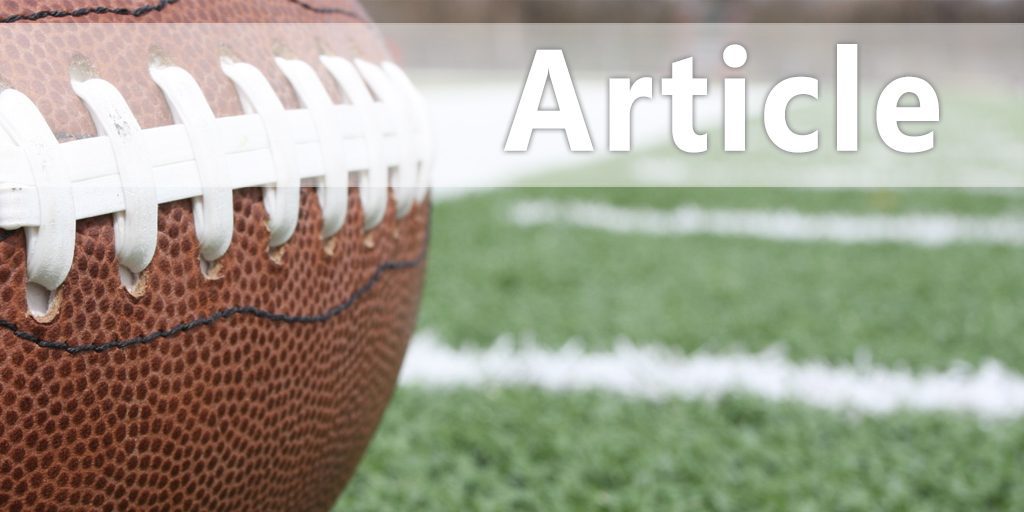
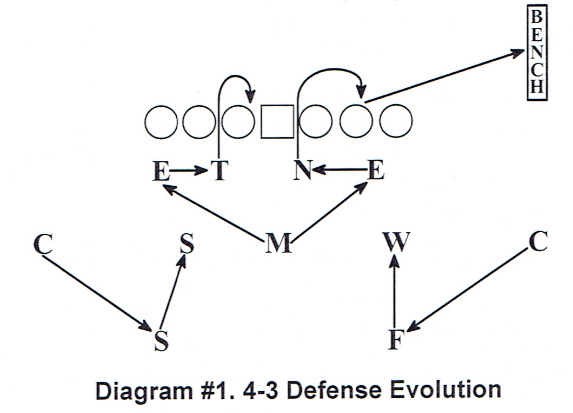
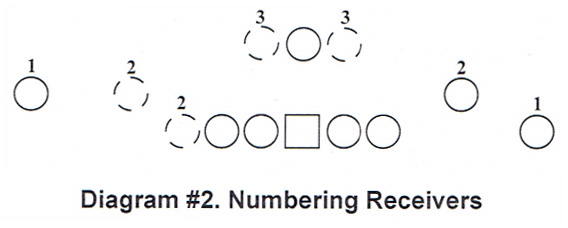

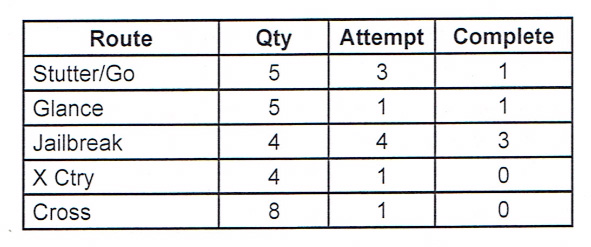
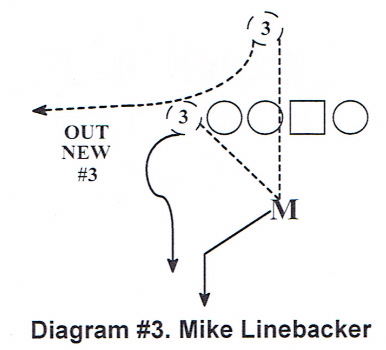
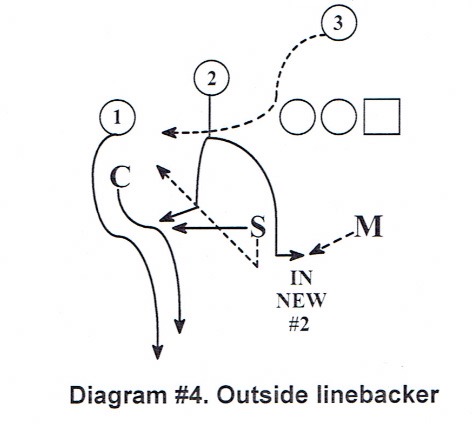
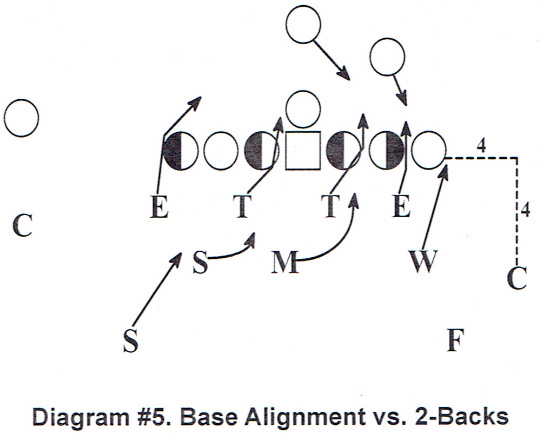
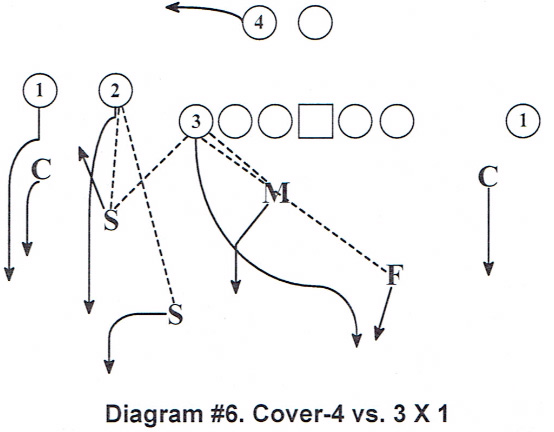
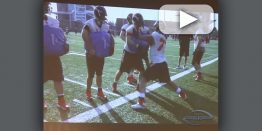
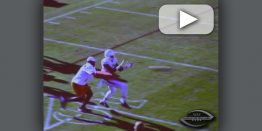
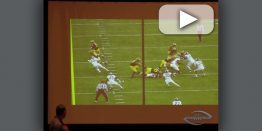
![Defensive-Line-Bag-Drills---Robert-VanSickle---Nike-Coach-of-the-Year-Clinics-[VIDEO]](https://d32hqtdnadtdcp.cloudfront.net/wp-content/uploads/2016/11/Defensive-Line-Bag-Drills-Robert-VanSickle-Nike-Coach-of-the-Year-Clinics-VIDEO-262x131.png)